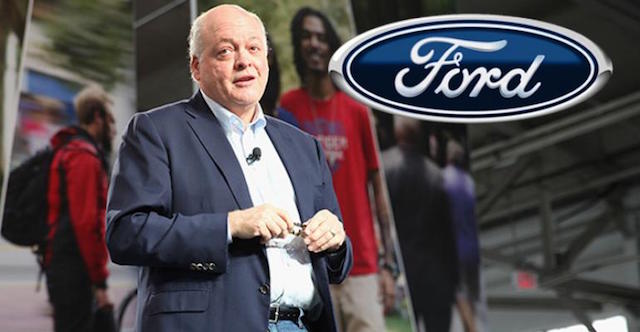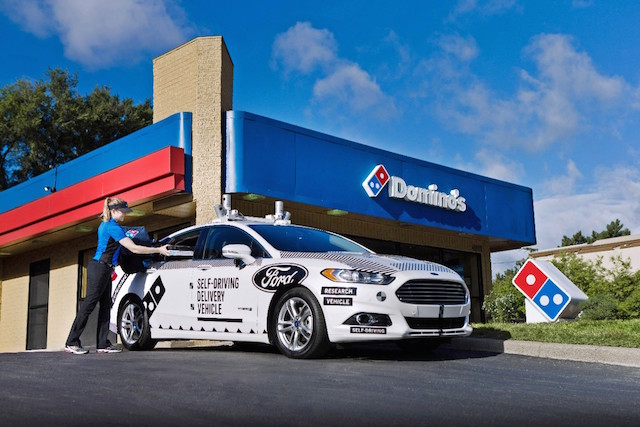
Ford may be trialling a self-driving car that delivers pizzas in and around its hometown Detroit, but it’s reviewing plans for fully autonomous vehicles by 2021.
The carmaker’s CEO Jim Hackett (above) has said publicity about self-driving cars was “overextended romanticism by everybody in the media about how this robot works.”
Earlier this year, then Ford chief executive Mark Fields said the carmaker was planning to launch a fully autonomous vehicle by 2021, one without a steering wheel, brake pedal, and accelerator pedal.
Months later Field resigned and was replaced by Hackett, who was already heading up Ford’s self-driving unit. Now Hackett is reviewing Ford’s autonomous plans.
He said the rollout of self-driving vehicles will be a “progressive thing, just like computing. If you think about a vehicle that can drive anywhere, anytime, in any circumstance, cold, rain—that’s longer than 2021. And every manufacturer will tell you that,” Hackett said.
His assessment somewhat blunts the hype in New Zealand about self-driving cars soon being the answer to everything from congestion to road deaths.
Politicians threw the topic about during the recent election, as if self-drivers were queued up waiting for passengers. But there is a long way to go before they become anything like a reality.
Hackett says autonomous vehicles may not replace human-driven cars outright, and shared fleets won’t necessarily supersede private car ownership either.
Autonomous vehicle intelligence “could play a role in vehicles that people own, vehicles that aren’t supposed to crash,” said Hackett.
“You’re buying the capability because of the protection it gives you. It’s also possible it could be applied in these big, disruptive ways that of course we’re not blind to, but my bet is we don’t know.”
Ford and Domino’s teamed up six weeks ago in Michigan to test self-driving pizza delivery cars, as part of an effort to better understand how customers respond to and interact with autonomous vehicles.
But the pizza delivery car – a Ford Fusion Hybrid – isn’t driving itself. Each car is being driven by a Ford safety engineer. Other researchers on board zero in on the customer’s response to the last 15 metres of the delivery experience.
Hackett isn’t the only automotive executive questioning the timing and acceptance of autonomous cars. BMW sales and marketing chief Ian Robertson (above) has said there were bigger hurdles to overcome than any technology or regulatory barriers.
“How this develops will not be limited by the technical steps but by the other things around it, what we’re prepared to accept and how we’re prepared to accept it,” he said earlier this year. “And we’re really not ready, as a world, for a machine to make that final decision yet.
“I look at the US, where 40,000 people died on the roads last year. If we said we could halve that, we’d all say that was a really good step. But, on the other hand, if 20,000 people fell out of the sky in aeroplanes each year we wouldn’t be flying.
“You can look at the aircraft industry. They have had autopilot for a long time, but that is quite easy as you don’t tend to have people running out in front of you in the sky, or traffic lights and the such.
“It works though and we could quite easily fly from Sydney to Geneva and go on autopilot the whole way, but there is still a crew sitting there all the time because sometimes things can go wrong.
“And in those instances you need to have the person take over. And I doubt many people would get on the plane if they knew there wasn’t a crew up front.
“Does the (autonomous) car have the ability to answer the life or death question? Yes it does. Are we ready for that? No we’re not. It will be limited not by the technology but by society.”


